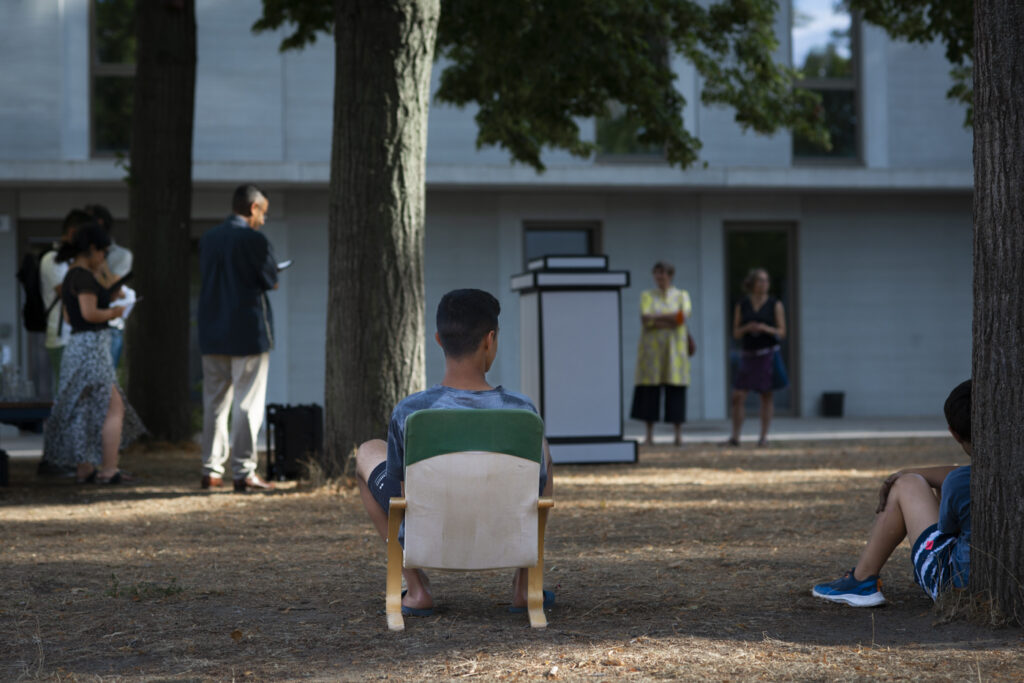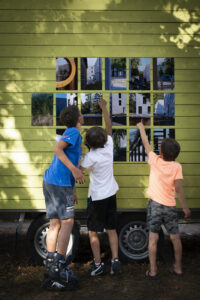
… with a fragile home base made of cardboard and tape
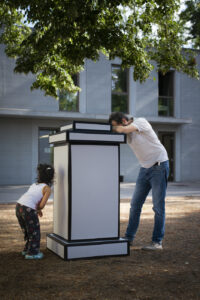
„1,2,3,4,5,6,7,8,9,10… ich komme!
„Eckstein, Eckstein, alles muss versteckt sein, versteckt oder nicht ich komme!”
“Ready or not, here I come!“
Claudio came here to think about the idea of a monument, wanting to think about whether it made sense to have a monument here, in this particular context; and what form it might take, who the subject might be, what it should represent, what feelings it should promote.
The presentation today did not show a completed work of art; it was more a narrative of the process, of the state Claudios reflections are in. Like in other projects he trys to tell the contexts in a different and original way, using other points of view.

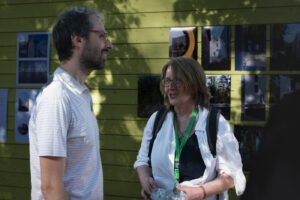
Claudio Beorchia:
“Here, if you look purely at the space, a monument would not look too bad: there are the buildings, the common spaces, a play area, a central green area, some empty spaces… on a purely aesthetic level it would fit.
But of course this is far from a neutral, usual or normal space. The public monument is meant to represent, commemorate, and remember events and figures important to a community. A monument should create a shared memory, a common identity, a sense of belonging.
But here people come from different countries, at different times, they do not speak the same language, they have completely different histories; and this is, at least on paper, a temporary, transitory placement. So how can there be a sense of belonging, shared memory, identity?
To think about the meaning of a monument in this context, I began to think in opposites.
The monument is a serious, rhetorical, profound, important thing that wants to be permanent. What can there be at the opposite extreme of a serious, important thing? Playing activities, games, with their light and playful poetics.
And there is one game that, because of its characteristics, becomes particularly meaningful and allegorical in this context: hide-and-seek.
When you play hide-and-seek, you seek shelter, you hide, you run, you break free.
And so I observed the kids occasionally playing hide-and-seek here. Then I asked one of them to show me the best hiding places in the area.
What can you see from the hiding places? What do you observe about this context from those strategic locations? And so, I took photos, which show from an emblematic point of view this environment.
Hideouts are interesting points: they protect, they make invisible. But at the same time, to be really advantageous, they provide a good overview of the environment, they show if someone is coming, they provide sufficient escape space.”
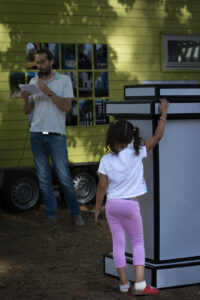
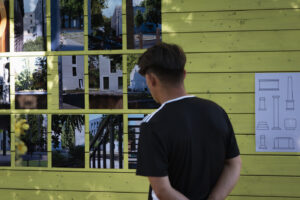
“In hide-and-seek, the other essential element of the game, in addition to the hiding place, is the base/den/home (it takes different names in different countries), the point where you count, and which players must reach and touch in order to be free.
The guys here have one of these trees or that light pole as their base; I’ve heard them use this little yellow house on a couple of occasions as well. It’s usually a central spot in the play area, in an open space, clearly visible. In some ways the hide-and-seek base might be a good spot to put a monument. Monuments are also usually in an open, central, highly visible space.
And, as in hide-and-seek, the monument always has a base. So I began to think about this indispensable but perhaps underestimated element of the traditional monuments. The base of the monument is what gives authority and importance to the subject or theme depicted; it is what makes us look up. The base is the indispensable premise of the monument. They have very different shapes, but usually they have simple geometric compositions.
I made one, basic one: simple, temporary, made of cardboard and tape.
Being made of cardboard, light, transportable, even rather fragile, is the result of some reflections on the condition of those who live here.
This base does not offer an answer to the question of the monument, but perhaps leaves a space – empty – for reflection.”
